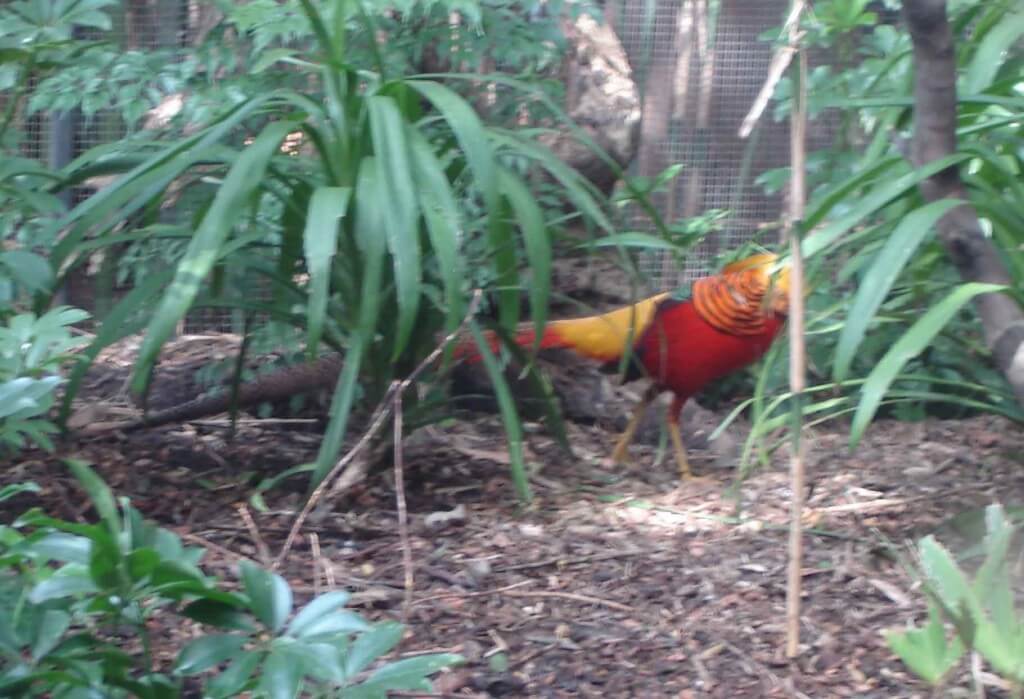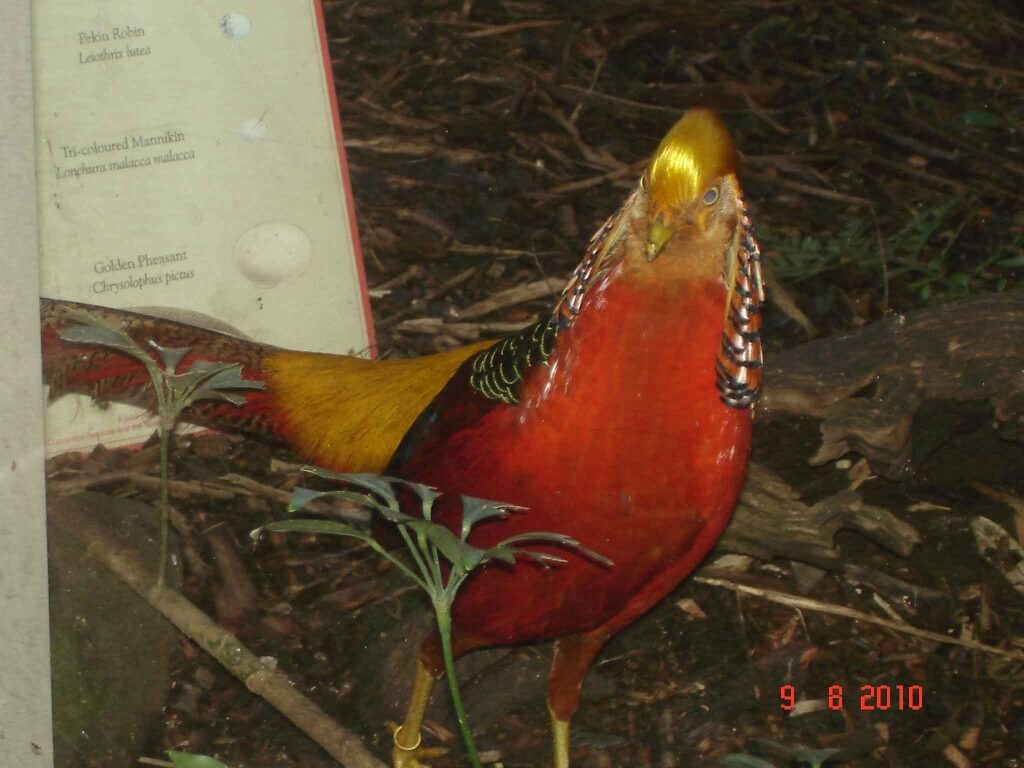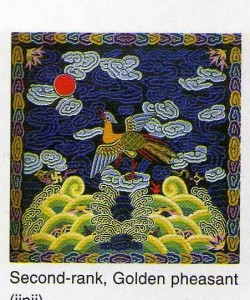The Golden Pheasant – an exotic bird of great beauty, symbolic in Chinese culture and tradition.
The Golden Pheasant or Chinese Pheasant (originally native to China) is a very hardy game bird. It survives in its natural habit of coniferous forests in the mountainous regions of western China.
Golden Pheasants and Silver Pheasants (also a native of China) have been used symbolically in ancient Chinese culture and tradition for hundreds of centuries. To the Chinese the Golden pheasant is a symbol of beauty, good fortune and refinement.
In the Song Dynasty (960-1279) women wore robes decorated with colorful pheasants for important state occasions. In the Yuan Dynasty (1271 to 1368) a white crowned long tailed pheasant (probably the Silver pheasant) was associated with women of the imperial family.
During the Ming dynasty (1391-1527) the Golden pheasant, which was much admired for its beautiful long tail, gold, red and green plumage, was used as a symbol of rank. The Golden Pheasant was used as a symbol for the second civil servants rank badge, and the silver pheasant was used as a symbol of the fifth rank civil official. The badges were usually a large richly embroidered square piece of cloth depicting the appropriate birds.

Golden Pheasants admired for their long tail feathers has been featured symbolically in Chinese Culture and Tradition for centuries. Photo taken at Melbourne Zoo
Long tailed pheasants were also popular on porcelain decoration. In the reign of Emperor Yong Zheng (1723-1735) decoration on porcelain of a long tailed Pheasant and Quail placed together were considered a favorable omen.
Facts about the Golden Pheasant
Outside of China, feral populations of these birds now exist in England and United States. Early records indicate the Golden pheasant was imported from China to England and Europe around 1735. In North America the Golden pheasant has been in captivity since the early 1740’s. It is believed that George Washington may have kept them at Mt Vernon.
Adult males may grow 90-105cm in length, with the tail of the golden pheasant being approximately two-thirds of its total body length. The golden crest, rump and rich red body make it unmistakable; few birds look this exotic. The crest of the male is golden-yellow with a hint of red at the tip. The upper back is green, the lower back and rump are a golden yellow. The males also have a scarlet breast, whilst the lower legs and feet are a dull yellow in both males and females.
The female is smaller in size, much less showy, with a duller mottled brown plumage. She is very similar to the female common pheasant, but has a much longer tail.
The males despite their brilliant colors are hardy birds and very difficult to see in their natural habitat. Their natural habitat is dense, dark pine forests with sparse undergrowth. The Golden Pheasant feeds on the ground on grain, berries, leaves, grubs, small insects and other vegetation. They roost in trees at night. They are fast on the ground and prefer to run rather than fly, but if startled they can suddenly fly upwards with a distinctive whirring of wings.
The Golden Pheasant is commonly found in zoos and aviaries, but due to interbreeding with other pheasant species, most are now impure specimens.
Many birds now seen in captivity also indicate different variations of the Golden Pheasant from inter-breeding. Some well known varieties are the Dark-throated pheasant, Yellow pheasant and the Snowflake pheasant.


I had seen this golden pheasant in Chinese art many times. I think I even have a paper cut of one somwhere, but I didn’t know anything more about it than that. It’s interesting that even George Washington might have kept them. They are very pretty. It is not surprising it is yet one more of the Chinese symbols for luck.
Hi, I had also seen the golden pheasant in books over the years and I’m sure they must appear on ancient scrolls as well. I was so thrilled to see a live one at the Melbourne Zoo. They are such a beautiful exotic colored bird. I’m glad you enjoyed my article. Thnx for your comments.